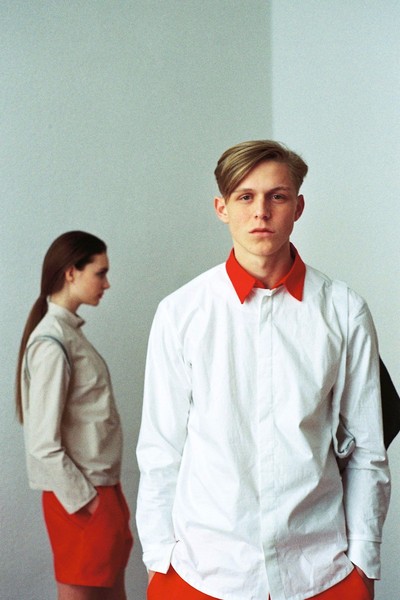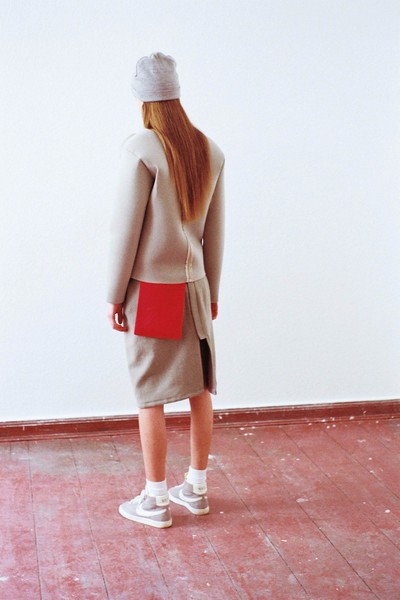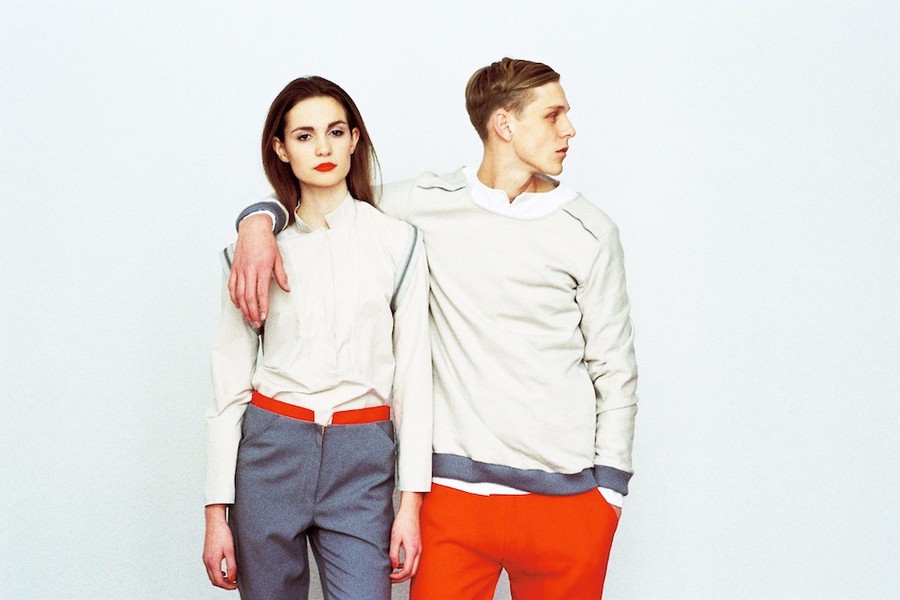‘JungVisionäre’ is the title of the BA collection by Julie Verbarg, who just graduated from HTW – University of Applied Sciences in Berlin. Julie was among six other HTW students who were selected to showcase their collections on the catwalk as part Mercedes-Benz Fashion Week Berlin in July 2013. Verbarg plays with the idea of creating construction out of deconstruction, designing very comfortable and transformable outfits. The multifunctionality of the garments is her response to the rapidly changing environment as well as to today’s ‘fast fashion’. Her idea is derived from the concept of sustainability, striving to create high-quality multifunctional garments that are durable and useful.
Julie, could you please introduce yourself.
I’m Julie Verbarg, 26 years old, originally from Essen, Germany. I’ve been living in Berlin for four years and just graduated from HTW in March 2013.
What are you currently up to? Do you plan to start your own label or do you want to work with other designers?
It’s actually very hard to start something on your own after graduating because you need to find someone who will invest in your ideas. Now I am applying for different awards and hope that I can get some funding to start my own label.
Do you think that your participation in Mercedes Benz Fashion Week will help you find good funding or a partnership to do so?
I was lucky to be chosen out of 30 other graduates to present my collection during fashion week, which is the biggest platform to show one’s work in Berlin. I received some good feedback from people who saw the show, and I hope that my collection will get more attention in the near future.
What was the highlight of Mercedes Benz Fashion Week for you?
I was quite busy during fashion week preparing my own fashion show. But I did attend the DfT (Designer for Tomorrow) show, which I liked very much. My friend Jamie Wei Huang (Central Saint Martins College of Art & Design) was one of the finalists. Jamie is originally from Taiwan, but currently based in London, where I met her during our internship at Christopher Kane. I was happy for Jamie that she has got a great chance to show her collection to a wider audience at such a prestigious award ceremony show.
Where do you see yourself as a new designer in the fashion market? Where is your niche?
The basic idea of my collection is the revolution of sustainability, which means that you just need some basic garments such as a shirt, simple trousers and a simple sweater, which you can change as you see fit by attaching or detaching ‘spare parts’, some extra hems, collars, cuffs and panels of extra fabric. This will give you the freedom to make your clothes suitable for any occasion without changing your whole outfit. It also supports the idea of sustainability; rejecting the ‘throwaway’ fast fashion mentality and introducing a new way of wearing and reusing garments. I design sustainable casual clothing for everyday wear that allows the consumer to be creative in an individual way.
Where does the title of your graduate collection ‘JungVisionäre’ come from?
One of my biggest inspirations was a special type of revolutionary architecture from the 18th century that developed within classicism. The architects from this movement came up with ideas that were visionary and modern for their time. They were designing structures that you can actually find nowadays in contemporary architecture. In a way they were minimalists, too. I also noticed that people tend to idealise the past and that they are always looking back, and nobody is looking ahead into the future or thinking about what we could do to make it better. ‘JungVisionäre’ should encourage people to look forward into the future.
If you would describe ‘JungVisionäre’ in 3 words…
Rethink – impulse – enhance.
What comes first in your design process?
The fabric. The actual material is very important for me. I start with it. I try to develop new fabrics myself or I use materials that nobody was using before.
How did you come up with your (de)constructivist approach to design?
You create a garment that is very transformable. The many parts of it can simply be detached, pulled down, unzipped… I just wanted to design easily transformable garments. I use Velcro that helps to attach pieces of fabric in a very simple manner. The trick is that it is stitched from the inside and rather invisible at first glance. I also use zippers for sleeves. The idea is that you can transform coats to jackets or vests, and trousers to shorts.
How would you distinguish yourself from other designers? What is so special about your work?
My work is up to date and contemporary, and can be developed even further. It introduces a new way of wearing clothes when you have only a few high-quality items that can be changed according to your needs, instead of having your wardrobe filled to the brim with clothes that you never wear or that are already out of fashion. My work is also about comfort, wearability and sustainability.
Veronika Dorosheva











